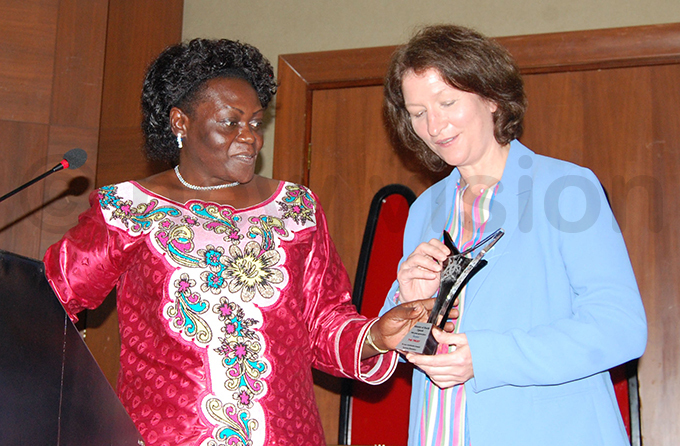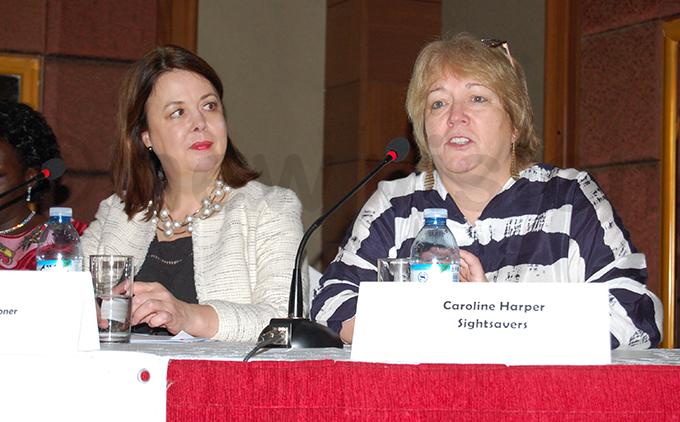Uganda on track to eliminate trachoma
Feb 08, 2019
Government and its partners have stopped treatment in 47 affected districts apart from only three

Health experts have announced that Uganda is on track in eliminating trachoma by 2020. More than 10 million people have received preventive treatments for trachoma in the country.
The disease was endemic in 50 districts in the regions of Karamoja, Busoga, Acholi, Lango, West Nile and Bunyoro.
Trachoma is a bacterial infection that affects the eyes. It is caused by the chlamydia trachomatis bacteria. The disease is contagious, spreading through contact with the eyes, eyelids, and nose or throat secretions of infected people. It can also be passed on by handling infected items, such as handkerchiefs.
Health state minister in charge of general duties, Sarah Opendi, disclosed that government and its partners have stopped treatment in 47 affected districts but only three districts of Moroto, Nakapiripirit and Nabilatuk still require one round of treatment.
"Uganda is the leading country in the elimination of trachoma in the region. An Eastern Africa cross border network was established and we have been conducting collaborative implementation with neighbouring countries, this will ensure the elimination of trachoma in the region," Opendi said.
 The Queen Elizabeth Diamond Jubilee Trust CEO Astrid Bonfield receives an award from state minister for health, Sarah Opendi, during the celebration of collaboration towards the elimination of trachoma in Uganda at Sheraton Hotel in Kampala. Photo by Sylvia Katushabe
The Queen Elizabeth Diamond Jubilee Trust CEO Astrid Bonfield receives an award from state minister for health, Sarah Opendi, during the celebration of collaboration towards the elimination of trachoma in Uganda at Sheraton Hotel in Kampala. Photo by Sylvia KatushabeOpendi made the remarks during a meeting to mark achievements of the trachoma initiative partnership of the Queen Elizabeth Diamond Jubilee Trust at Sheraton Hotel in Kampala.
Dr Edridah Muheki the acting assistant commissioner for neglected tropical diseases at the ministry of health said the trachoma elimination programme started in 2007 and they used ‘SAFE' strategy (surgery, antibiotic mass distribution, facial cleanliness and environmental sanitation improvement ) as recommended by the World Health Organisation.
She said the condition is common in people living in rural areas with limited access to water and good sanitation. According to Muheki, trachoma is the leading cause of blindness in Uganda.
The deputy British High Commissioner, Angela Trott, said through the trachoma imitative, the United Kingdom (UK) has contributed funds in training of health workers and invested in community sensitisation aimed to increase to services and reduce disease transmission.
"Over the last four and a half years, the UK government has provided £50m (sh237b) to support the Queen Elizabeth Diamond Jubilee Trust's avoidable blindness programme across seven African countries," Trott said.

Queen Elizabeth Diamond Jubilee Trust is a charitable foundation established in 2012 by the Commonwealth Heads of Government to mark and celebrate Queen Elizabeth's 60-year contribution to the Commonwealth at the time of her Diamond Jubilee.
Signs of trachoma
According to health experts, trachoma usually affects both eyes and may include mild itching and irritation of the eyes and eyelids. Others are a discharge from the eyes containing mucus or pus, eyelid swelling, light sensitivity and eye pain among others.
How to avoid the disease
Dr Muheki said in order to avoid trachoma, facial cleanliness, hygiene promotion, and access to water and sanitation should be thought of as the cornerstones of prevention.
It is also advisable to use soap while washing hands hence it will break the cycle of reinfection.
Muheki also said that under the project they have trained over 10,000 health workers in trachoma case detection, built latrines and sanitation facilities in affected areas.
WHO and its partners set 2020 as the target to eliminate blinding trachoma globally, and communities can do this individually by breaking the cycle of infection and re-infection.
